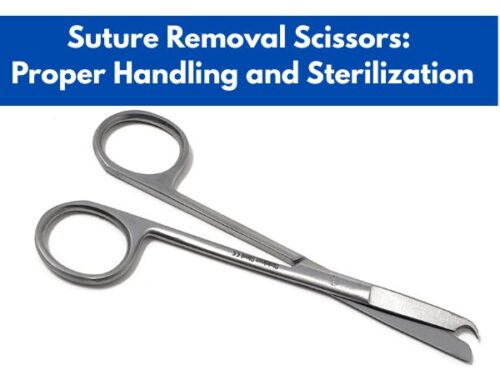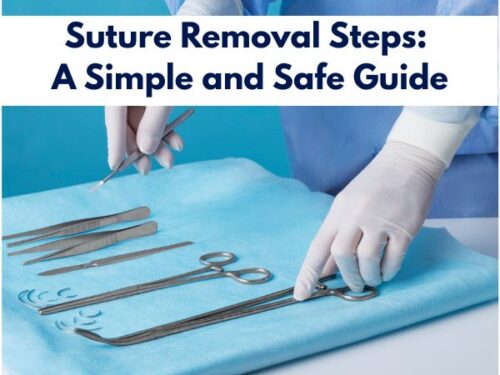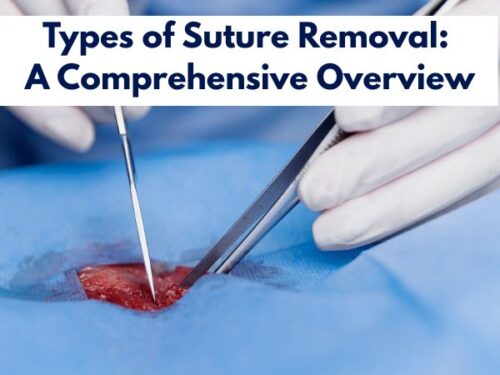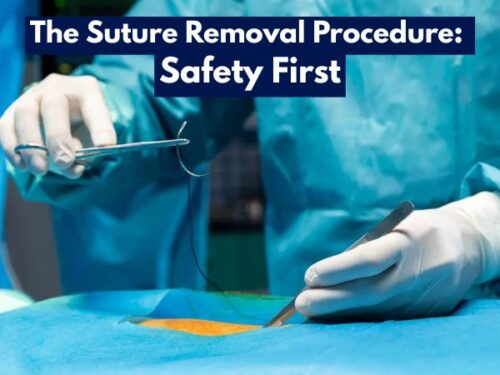Autoclave Sterilizer vs UV Sterilizer: Which is More Effective?
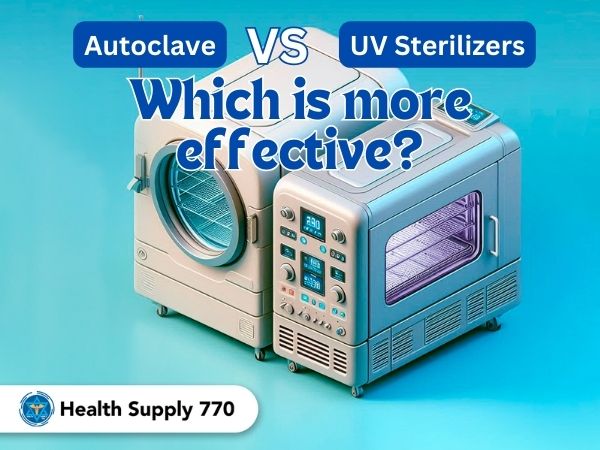
Sterilization is a process that refers to making items and instruments germ-free. The high risk of infections within the medical facilities due to the use of unsterilized equipment necessitates the employment of a sterilizer. In this regard, many types of sterilization devices have been introduced in the US market two of which are autoclave sterilizer vs UV sterilizers. Although both of these sterilizers are effective against germs, the extent of cleanliness they offer differs. That’s why, autoclave sterilizers are often preferred over UV ones.
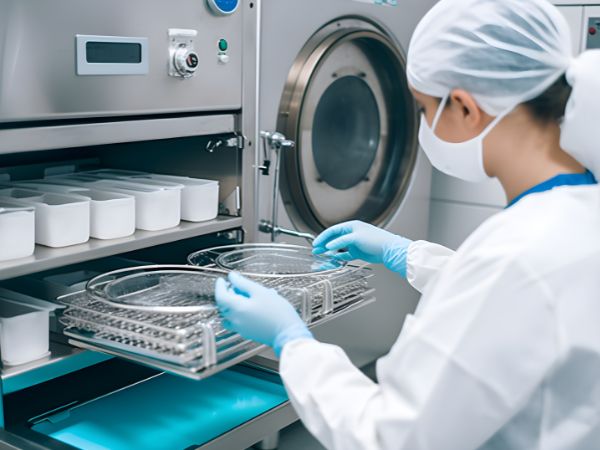
In the following article, let us dive into the differences between an autoclave sterilizer vs UV sterilizer in detail and conclude if one of them is actually better at its job than the other.
What is an Autoclave or Steam Sterilizer?
An autoclave sterilizer works by generating highly-pressurized steam which is then utilized to sterilize the instruments. The system gets heated up to a high temperature so that the water in it can vaporize to give rise to steam.
Working
An autoclave sterilizer takes in water and heats it above its boiling point i.e. at 121°C (250°F) or 134°C (273°F) to generate high-pressure steam. This steam is lethal for microorganisms as it has high cellular penetration. As a result, the proteins of the cell precipitate and the microbe dies.
Pros
The autoclave sterilizers have the following advantages:
· Wrapped and covered items can easily be sterilized using autoclave sterilizers.
· Items that have porous surfaces or multiple bends and folds can be kept in an autoclave sterilizer as the steam can penetrate inside such designs.
· Glassware, plasticware, cloth, surgical instruments, as well as liquid substances can easily be sterilized with autoclave sterilizers.
· Apart from bacterial cells, the autoclave sterilizers are also effective against viruses, protozoa, etc. In addition, bacterial spores are also damaged which is hard to do as these spores are resistant to heat and chemicals.
Cons
Despite a long list of advantages, the autoclave sterilizers also have the following disadvantages:
· The use of autoclave sterilizers is not recommended for heat-sensitive substances as the temperature within the device rises above 100°C which might deteriorate certain chemicals.
· When an instrument is frequently subjected to steam sterilization using an autoclave, its functionality reduces over time. In addition, the appearance of the product is also dulled.

What are UV Sterilizers?
A UV or ultraviolet sterilizer is an equipment which is used to kill bacteria present on the instruments by exposing them to UV or ultraviolet light. For this purpose, the objects are kept in the sterilizer for a specified time required for the killing of all microbes. As a result of line-of-sight exposure, the items become clean and free from germs.
Working
A light that falls within UV-C range is emitted by the UV sterilizers. Because of having germicidal properties, this light penetrates deeper into the microbial cells. As a result, the cellular DNA or RNA starts deteriorating thus causing the microbe to die. These types of sterilizers are also employed for sterilizing baby bottles.
Pros
The UV sterilizers have the following advantageous features:
· UV sterilization is an effective and handy method for disinfecting substances which cannot be sterilized in an autoclave sterilizer i.e. heat-sensitive materials.
· Items such as water and other liquid products are effectively sterilized using UV sterilizers.
Cons
Despite being a convenient method for sterilization, UV sterilizers cannot be employed to sterilize every type of equipment. Some of its limitations include the following:
· UV sterilizers are not suitable for the sterilization of items that have folds, curves, or bends as these parts do not get exposed to radiation. As a result, no sterilization occurs.
· The items that are kept in front of the UV rays get sterilized. However, the products which do not have direct UV exposure are not sterilized.
· There is a need to examine the UV source frequently to make sure it is in a working state. In case of its lowered intensity, the sterilization process is compromised.
·;
· Wrapped items cannot be sterilized in a UV sterilizer as the radiations do not penetrate the outer covering.
· Frequent exposure to UV radiation can cause certain materials to degrade.

Autoclave Sterilizer vs UV Sterilizer: Comparison
The comparison of an autoclave sterilizer vs UV sterilizer is often made to prove the superiority of one over the other. To add to the existing information, the following table summarizes the differences between an autoclave sterilizer vs UV sterilizer:
| Features | Autoclave Sterilizers | UV sterilizers |
| Sterilization Type | Moist heat sterilization | Sterilization by radiation |
| Sterilization Medium | Steam | UV radiations |
| Sterilization Time | High as the process takes time | Low as the process is quick |
| Thorough Cleaning | ✔ | ✖ |
| Rapid Disinfection | ✖ | ✔ |
| Handling of High Load | ✔ | ✖ |
| Personnel Safety | High | Moderate |
| Requirement of Water | ✔ | ✖ |
| Suitability for Porous and Curved Items | ✔ | ✖ |
Autoclave Sterilizer vs UV Sterilizer: Which One is More Effective?
Keeping in view the above-mentioned discussion between autoclave sterilizer vs UV sterilizer, it is safe to say that, for the sterilization of medical equipment, autoclave sterilizers are superior to the UV ones. This is due to the fact that autoclaves generate steam which covers all the instruments kept in the interior chamber thus resulting in effective sterilization. While in UV sterilizers, a direct exposure is necessary which is difficult to achieve especially with higher load capacity.
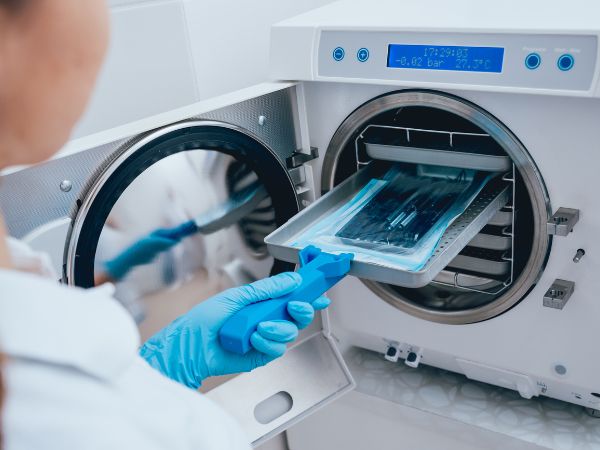
Bottom Line
Sterilization is the most essential process in medical facilities to prevent contamination and subsequently the transmission of infections. In this process, many different kinds of sterilizers are available in the market including an autoclave sterilizer vs UV sterilizer.
An autoclave sterilizer vs UV sterilizer is often compared on multiple grounds to find out which one is better than the other. After the detailed comparison mentioned in the above article between an autoclave sterilizer vs UV sterilizer, it can be concluded that the autoclave sterilizers are better than the UV ones due to the effective sterilization they offer. However, the choice is to be made based on the needs of the buyers, the facility in which the sterilizer is to be installed, as well as the nature of the items to be sterilized.
Keeping in mind the extensive applications of an autoclave sterilizer vs UV sterilizer, there is a need to install these devices in every medical and dental facility as well as in beauty salons. In this regard, for purchasing an autoclave sterilizer vs UV sterilizer, reliable vendors like Health Supply 770 should be approached. They ensure the provision of quality products along with satisfactory services.















